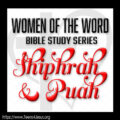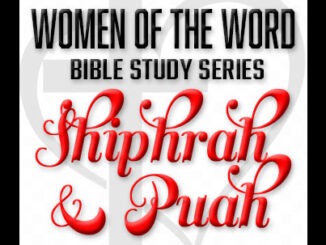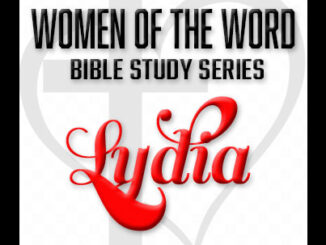Scripture References:
Exodus 2:22, Exodus 4:18-20, Exodus 4:24-26, Exodus 18:1-6, Numbers 12:1 (possible reference)
Name meaning:
a little bird or sparrow
Introduction:
The wives of the men in the Bible are rarely mentioned, and even less often are they the subject of studies. Yet there is much we can learn from these women of faith. Zipporah, the wife of Moses, is mentioned a few times in the Bible. What can we learn from this woman so worthy of being mentioned that we see her in a few different passages? Let’s explore further and see what we can learn from the Midianite married to Moses.
Lesson:
We are first introduced to Zipporah in Exodus 2:22 when we learn she is Moses’ wife:
Moses first meets Zipporah and her six sisters at a well where they went daily to water their flocks. Moses assisted them and they told their father of the Egyptian who had helped them. Upon invitation, Moses agreed to stay with the Midianite shepherd-priest Jethro, who later gave Moses his eldest daughter Zipporah in marriage. She bore a son, and he named him Gershom; for he said, ‘I have been an alien residing in a foreign land.’ Eliezer was next born to them (his name meant “The Lord of my father was my help,” indicating Zipporah did not share the faith of Moses and instead chose the faith of her father).
After being with his wife and her family, Moses is called back to Egypt by the Lord, his family going with him. Zipporah says goodbye to her father and her family, taking her children and their possessions and following her husband.
Moses had not circumcised Eliezer (to keep peace with his unbelieving wife), and along the way back to Egypt, at a place where they spent the night, the LORD met Moses and tried to kill him. But Zipporah relented, taking a sharp stone and cutting off her son’s foreskin and touching Moses’ feet with it. She said,
‘Truly you are a bridegroom of blood by circumcision.’ (Exodus 4:24-26)
Something to think about at this point. “Feet” in the Hebrew language is often a euphemism for genitals. Uncovering the feet was often symbolic of wanting to lie with the person as husband and wife, as we see with the story of Ruth. The men traded sandals to symbolize marriage arrangements. Feet seem to speak volumes without using actual genitalia or reference to it. Zipporah might have touched his “feet” with the fresh foreskin, or she might have thrown it to the ground in disgust for his God’s requirement. Whatever the interpretation, we know her and the boys returned to her father’s home at some point before the Exodus from Egypt.
We see Zipporah and the boys once again in Exodus 18:1-6:
Jethro, the priest of Midian, Moses’ father-in-law, heard of all that God had done for Moses and for his people Israel, how the Lord had brought Israel out of Egypt. After Moses had sent away his wife Zipporah, his father-in-law Jethro took her back, along with her two sons. The name of the one was Gershom (for he said, ‘I have been an alien in a foreign land’), and the name of the other, Eliezer (for he said, ‘The God of my father was my help’). Jethro, Moses’ father-in-law, came into the wilderness where Moses was encamped at the mountain of God, bringing Moses’ sons and wife to him. He sent word to Moses, ‘I, your father-in-law Jethro, am coming to you, with your wife and her two sons.’ At this point, Jethro has heard of the wonders of Moses’s God and he offers burnt sacrifices to the one, true God.
Jethro had become a believer!
From the tone, it seems most likely that Moses “sent” Zipporah away until things could be settled. Then once it was practical for her and the boys to join him, Jethro brought them to the camp. Nothing here indicates discord within the family. Yet at the same time, the Bible is silent as to what happened with wife after that. The book of Chronicles does mention Shebuel, son of Gershom and Rehabia, son of Eliezer (2 Chronicles 23:16-17).
The final possible reference to Zipporah is Numbers 12:1. While they were at Hazeroth, Miriam and Aaron spoke against Moses because of the Cushite woman whom he had married (for he had indeed married a Cushite woman). It is unknown whether Zipporah was the Cushite, though it is doubtful.








Be the first to comment